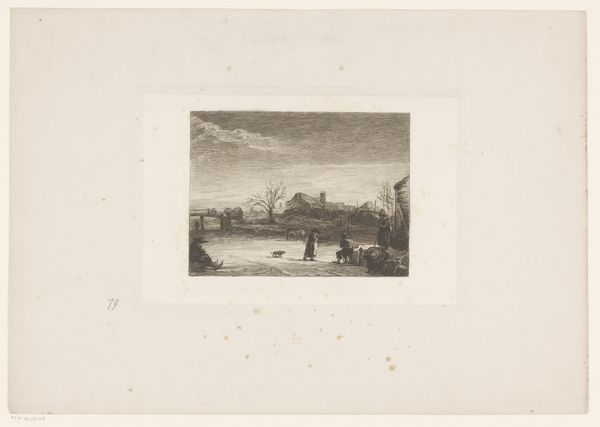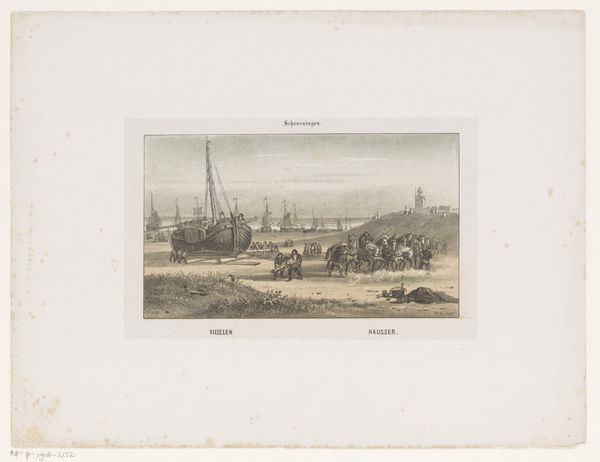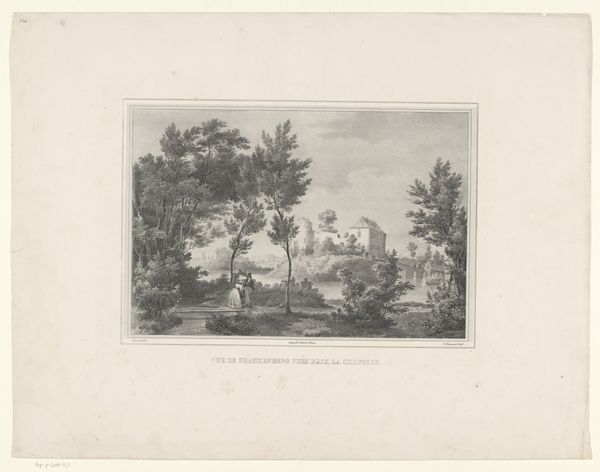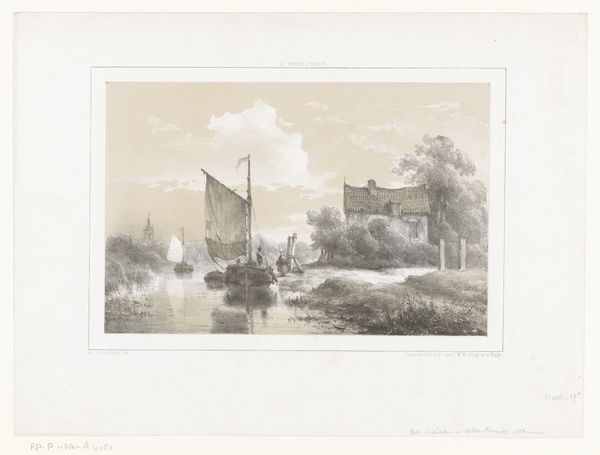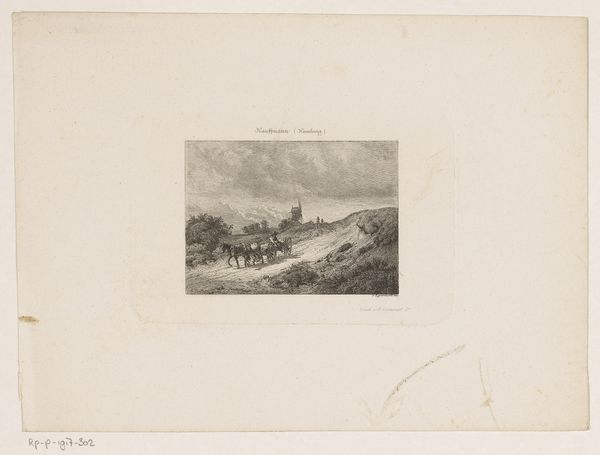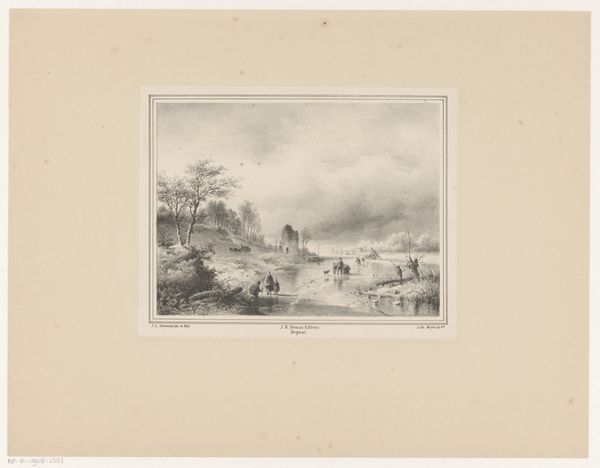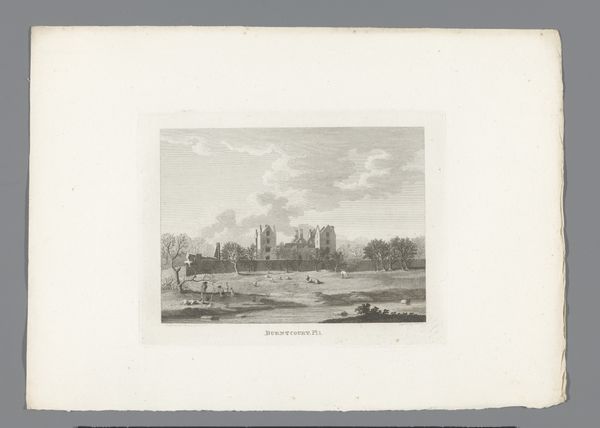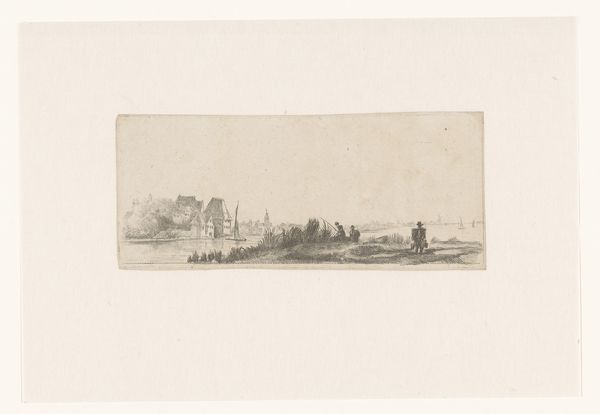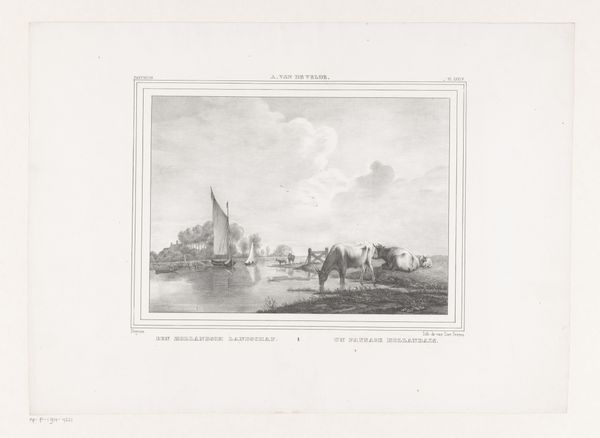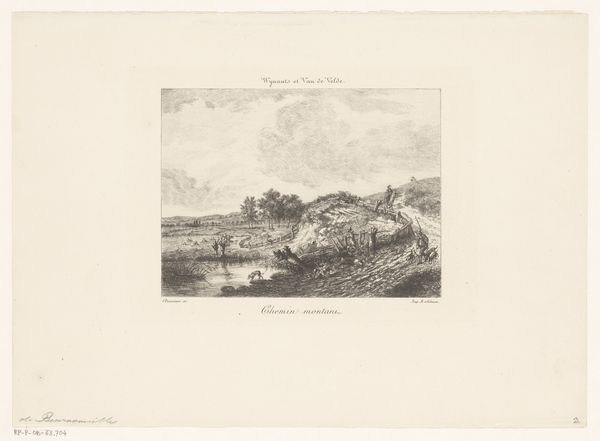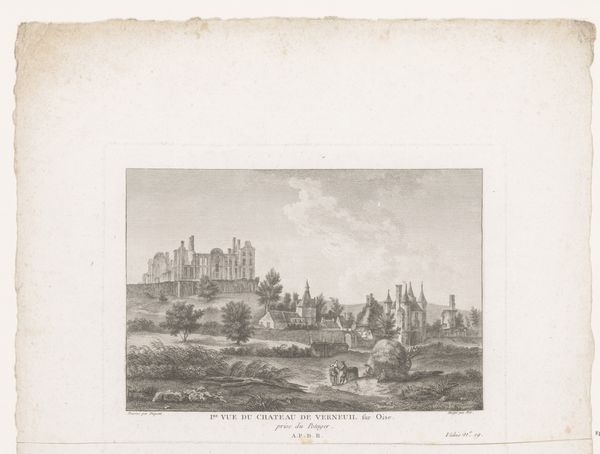
Dimensions: height 349 mm, width 530 mm
Copyright: Rijks Museum: Open Domain
Curator: Immediately, there’s something deeply familiar, almost dreamlike about this harbor scene. The soft ink wash gives it a feeling of gentle nostalgia, like a faded memory. Editor: We're looking at "Bedrijvigheid rond de haven," which translates to "Activity Around the Harbor," a drawing and print by Salomon Leonardus Verveer, created sometime between 1847 and 1865. The Rijksmuseum holds it. It captures a bustling scene in a Dutch harbor town, rendered with meticulous detail. The piece firmly belongs to the Romantic era. Curator: Romantic indeed! There's the tower in the distance, obscured slightly by mist, the traditional fishing boats... these are images that resonate so strongly within Dutch cultural identity, aren't they? Verveer is not just showing us a harbor; he is tapping into something deeper, perhaps the Dutch connection with the sea. The boats feel almost like they are on the edge of folk tradition. Editor: Yes, and understanding the genre painting is essential here. This wasn't simply an objective recording of a harbor scene; it was constructed. These genre scenes often functioned to normalize power relations through their carefully crafted presentation of everyday life. Is this a harbor serving the population or supporting a growing merchant class? It raises interesting questions about class, labor, and visibility, even with its gentle affect. Curator: An interesting tension there. There is also the smoke coming from a house on the left that draws us in; however, in front of that smoke, a child begs for alms, an ever-present element of the Romantic period. The light source behind this all suggests the dawning of an awakening for the nation and the citizens. Is this the birth of a new nation? Editor: And beyond this potential allegory, there's a clear story being told through the various figures present. From those near the shore in the boat who likely are trading overseas to the figure passing by. Are the artists emphasizing their differences or their connectedness? Perhaps the romantic genre hides more social discord? Curator: It highlights how Romanticism, for all its emphasis on feeling and the individual, can also subtly reinforce collective narratives. Editor: Precisely. That’s what’s so potent about examining art historical pieces from our current intersectional vantage point, revealing that some visual languages evolve slower than spoken ones, and often we discover complex nuances to otherwise pleasant depictions of an uneventful day by the docks. Curator: Thank you, truly fascinating and insightful. I think I will spend more time thinking about my interpretation of folk memory.
Comments
No comments
Be the first to comment and join the conversation on the ultimate creative platform.
